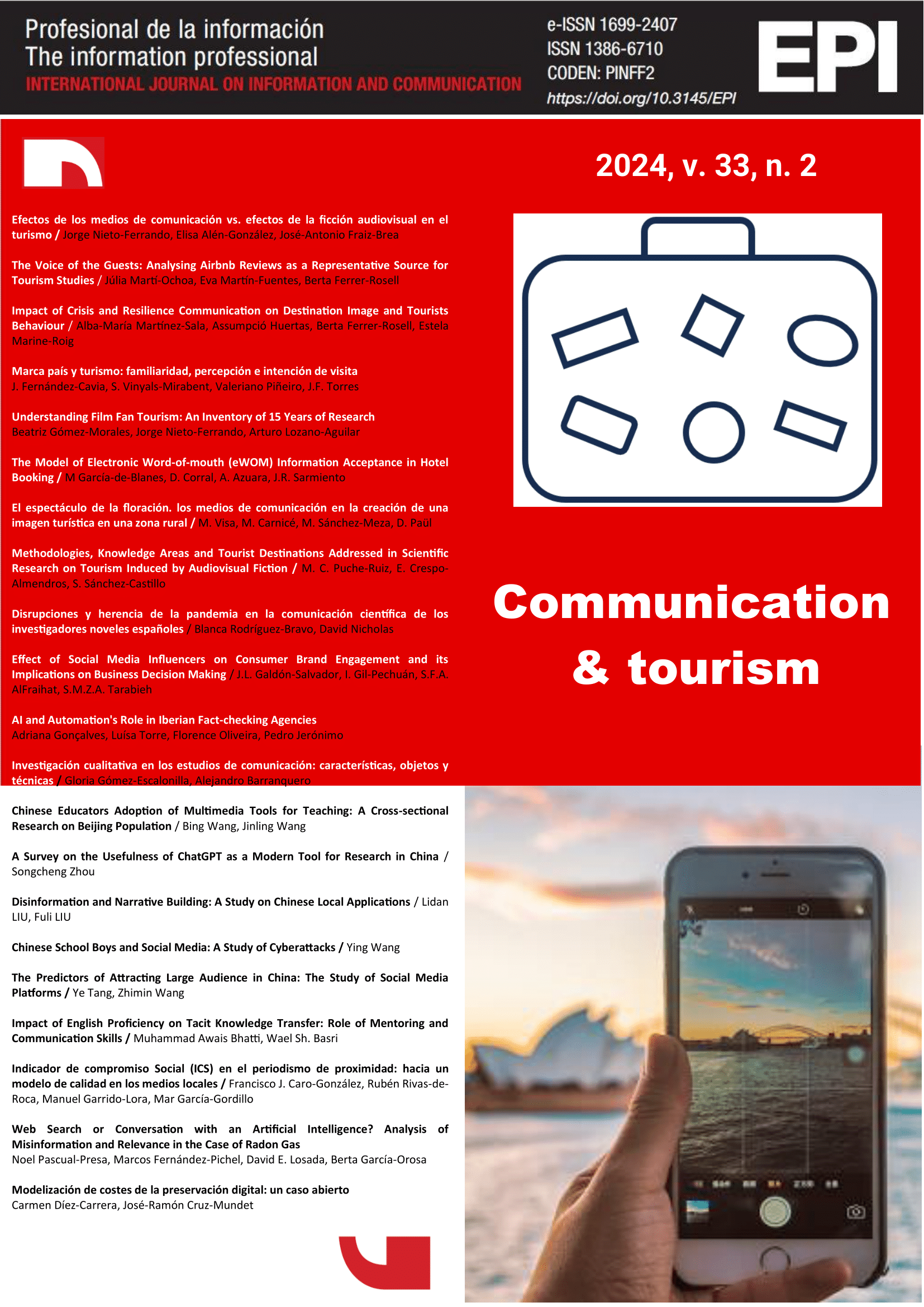Investigación Cualitativa en los Estudios de Comunicación: Características, Objetos y Técnicas
DOI:
https://doi.org/10.3145/epi.2024.0211Palabras clave:
Investigación Cualitativa, Comunicación, Meta-investigación, Técnicas Cualitativas, Género; Métodos, Análisis del Discurso, Entrevistas en ProfundidadResumen
Se presenta una fotografía de las investigaciones que en el campo de la comunicación en España utilizan los métodos cualitativos como perspectiva metodológica dominante. Se parte del análisis de contenido para analizar las características, objetos y técnicas dominantes en un censo de 1025 producciones científicas de 2007 a 2018, conformado por tesis doctorales, proyectos I+D y artículos de revistas científicas. En los resultados, contrasta la importancia que tienen estos métodos en las tesis doctorales y los proyectos de investigación frente a una mayor escasez de artículos académicos de corte cualitativo. Las tres producciones científicas analizadas emplean o triangulan dichos métodos, no todas las técnicas se utilizan por igual. Las investigaciones recurren con frecuencia al análisis de discurso y las entrevistas en profundidad, pero es mínima la presencia de observaciones, grupos de discusión y otras técnicas grupales. Los objetos de estudio también son variados, si bien los formatos audiovisuales se imponen a los periodísticos y se aprecia un creciente interés por medios y formatos digitales. Por último, en el ámbito de la autoría, los resultados revelan paridad, si bien preocupa la brecha de género en los estudios de más alto nivel.
Descargas
Descargas
Publicado
Cómo citar
Número
Sección
Licencia
Derechos de autor 2024 Profesional de la información

Esta obra está bajo una licencia internacional Creative Commons Atribución 4.0.
Condiciones de difusión de los artículos una vez son publicados
Los autores pueden publicitar libremente sus artículos en webs, redes sociales y repositorios
Deberán respetarse sin embargo, las siguientes condiciones:
- Solo deberá hacerse pública la versión editorial. Rogamos que no se publiquen preprints, postprints o pruebas de imprenta.
- Junto con esa copia ha de incluirse una mención específica de la publicación en la que ha aparecido el texto, añadiendo además un enlace clicable a la URL: http://revista.profesionaldelainformacion.com
La revista Profesional de la información ofrece los artículos en acceso abierto con una licencia Creative Commons BY.




